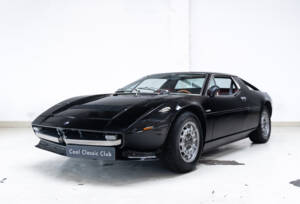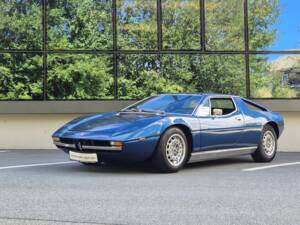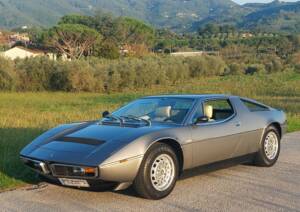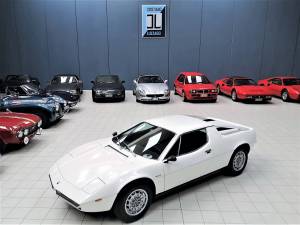Maserati Merak classic cars for sale
The Maserati Merak, produced from 1972 to 1983, merges Italian design flair with technical input from Citroën, exemplifying the 1970s mid-engine sports car era. Developed as a more accessible alternative to the Maserati Bora, the Merak stands out with its V6 engine and signature 2+2 layout, making it unique among its contemporaries. Discover detailed background, technical data, model variations, and what to look for when buying a Merak below.
Search results

1974 | Maserati Merak
Italian Delivered - Long Term Ownership -


1979 | Maserati Merak SS
Maserati Merak SS 1979

1974 | Maserati Merak
AUTO CONSERVATA DI IMPORTATAZIONE AMERICANA NEL 1994 CILINDRATA 3000

1977 | Maserati Merak 2000 GT
GIUGIARO
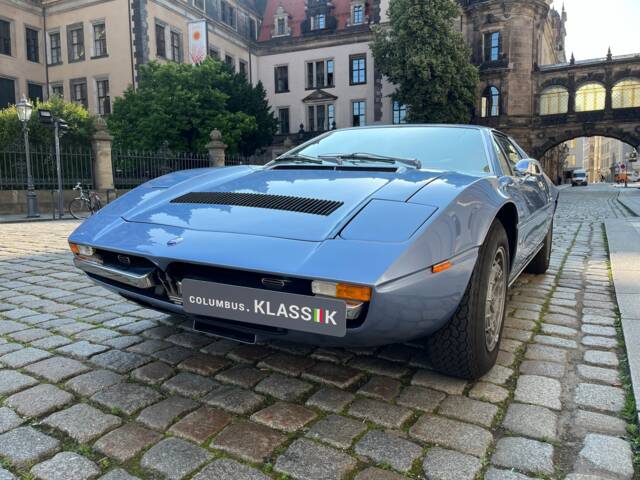
VAT is reclaimable
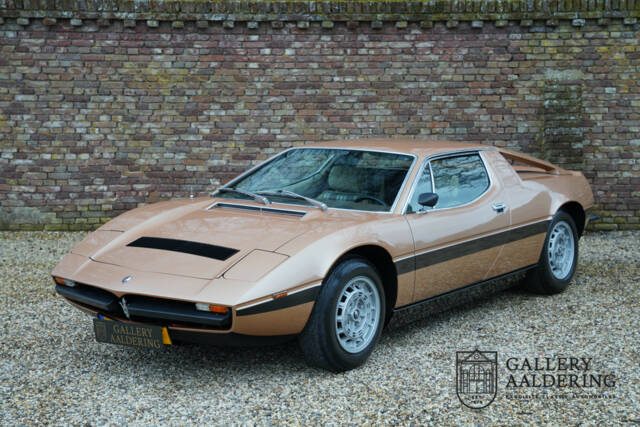
1981 | Maserati Merak 2000 GT
Maserati Merak 2000 GT Only 14000 kms original from new, Very original and unrestored example, Livery in "Oro Longchamp", Rarest version of the Merak, Only 200 examples built and delivered,

1983 | Maserati Merak SS
1983 Maserati Merak SS only 51,000 miles from new

1973 | Maserati Merak
1973 MASERATI MERAK 3000
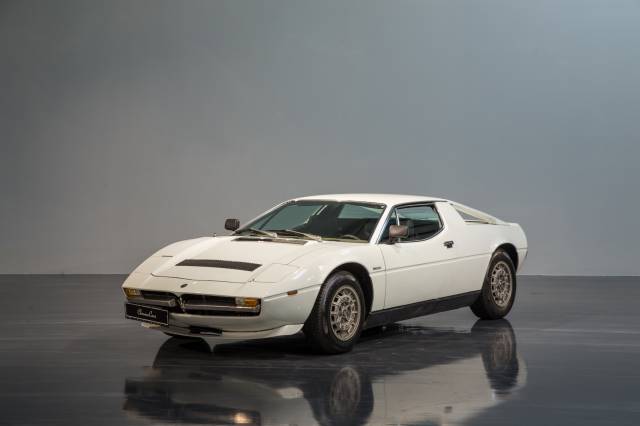
1976 | Maserati Merak SS
Mit ovalen Instrumenten
Maserati Merak listing references from Classic Trader
Below you will find listings related to your search that are no longer available on Classic Trader. Use this information to gain insight into availability, value trends, and current pricing for a "Maserati Merak" to make a more informed purchasing decision.
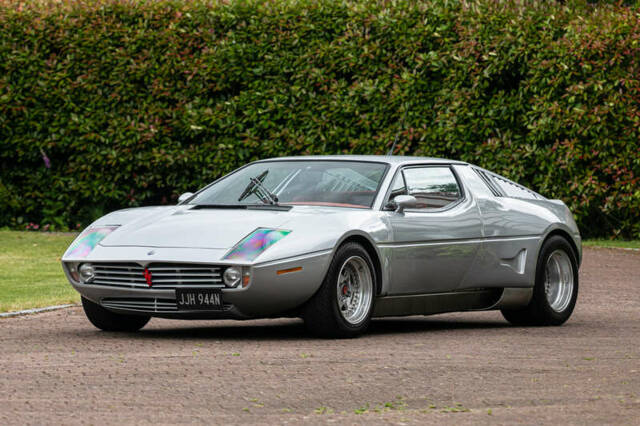
1975 | Maserati Merak
1975 Maserati Merak by Saurer - One of One

1974 | Maserati Merak
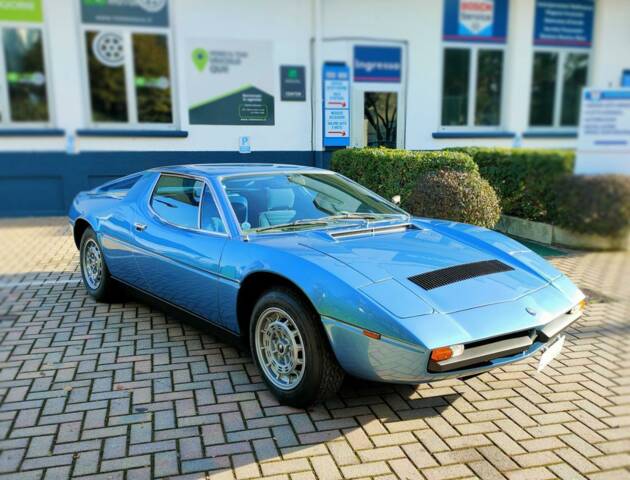
1981 | Maserati Merak 2000 GT
MASERATI Merak 2.0 V6
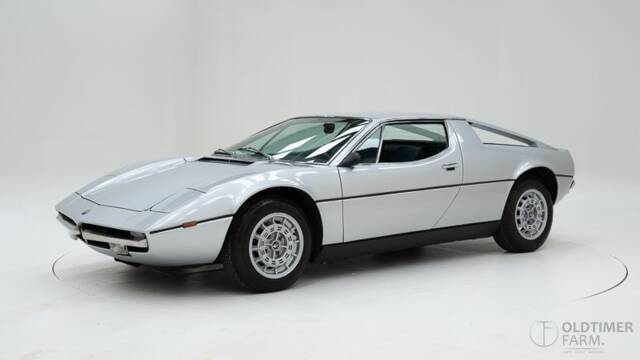
1974 | Maserati Merak
1974 Maserati Merak '74
History of the Maserati Merak
The Maserati Merak debuted at the 1972 Paris Auto Show, taking its name from a star rather than the usual Maserati practice of referencing winds. Born from a period when Maserati was controlled by Citroën, the Merak was designed by Giorgetto Giugiaro (Italdesign) and developed alongside the V8-powered Bora. The Merak used a mid-mounted V6 engine derived from the Citroën SM, freeing up cabin space for a pair of rear seats. While it used many Bora body panels, its rear design distinguished it with flying buttresses and a flat engine cover. Over its production span, the Merak saw several updates, including changes to the dashboard, hydraulics, and braking systems, reflecting influences from both Citroën and, later, Alejandro de Tomaso's stewardship.
Model History of the Maserati Merak
Preceding the Merak was the Maserati Bora, a pure two-seater with a larger V8 engine. The Merak, launched as the Tipo AM 122, introduced a V6 layout and the practicality of a 2+2 configuration. In 1975 Maserati rolled out the Merak SS, offering more power and less weight. Dashboard and interior changes appeared in the later production, transitioning from Citroën-inspired elements to a more classic Maserati look. For the Italian market, the Merak 2000 GT was introduced in 1977 with a smaller displacement engine to avoid local taxation. Production ended in 1983 with no direct successor.
Highlights and Market Data
A hallmark of the Merak is its unique blend of Italian sports car heritage and advanced Citroën technology, particularly the hydraulics and V6 engine. The SS variant, with 220 hp and a distinctive black front grille, provided improved performance and reduced weight. The Merak is the only Maserati of its era offered as a 2+2. Remarkably, many of its mechanicals and some design features trace lineage to Citroën, unusual for Maserati. The rarest is the Merak 2000 GT, produced in less than 200 units.
Technical Data
Special Editions and Collectible Models
Three main variants of the Merak exist: the original, the SS (Super Sport), and the 2000 GT. The Merak SS, introduced in 1975, features higher power output (220 hp), lighter construction, and distinctive exterior elements such as a black grille. Only about 1,000 SS units were produced. The 2000 GT, targeted at the Italian market from 1977, utilized a 2.0-litre engine to comply with local tax regulations and was built in gold or light blue paint—only around 196–200 examples were produced, making it exceedingly rare.
Weak Spots and Common Issues
Typical issues for the Maserati Merak are concentrated in the engine, bodywork, and hydraulic systems. Valve failures (especially exhaust valves), cylinder head gasket leaks, and worn valve guides are known V6 engine faults. Hydraulics, especially in early models, are prone to failure and can be expensive to repair. The Citroën-derived gearbox is generally reliable, but synchronisers and hydraulic clutches (notably in the SS) need attention. Rust forms in concealed areas like the chassis frame, sills, inner wings, and suspension mounts. Brakes on early Meraks (hydraulically operated) are maintenance-intensive, with the rear inboard discs particularly troublesome. Additionally, the market for parts and expert workshops is limited; thorough documentation and specialist inspection are essential before purchase.
Engine, Performance, and Handling
The Merak's longitudinal V6, developed from the Citroën SM's 2.7-litre block but enlarged to 3.0 litres, delivers a distinctively smooth and flexible power delivery. The SS's triple Weber carburettors and higher compression figure (9:1) contribute to its 30 hp boost over earlier models. With performance figures of 0–100 km/h in around 7 seconds and a top speed up to 250 km/h (SS), the Merak was competitive among mid-seventies sports cars, offering lighter weight and agile handling compared to its V8 siblings. The fully independent suspension and rear-engine balance ensure sporty, predictable handling; however, ageing dampers, bushings, and springs can degrade dynamics if left unattended. - Maserati Merak SS: 3.0L V6, c. 220 PS, lightweight, 0–100 km/h in ~7s
- Maserati Merak 2000 GT: 2.0L V6, unique to Italy, ~200 units built
- Maserati Merak (standard): 3.0L V6, 190 PS, early Citroën hydraulics
Interior, Comfort, Exterior, and Design
Giorgetto Giugiaro’s styling for the Merak fuses sharp 1970s geometry with signature Italian sports car proportions. The front is shared with the Bora, while the Merak's rear is instantly recognisable for its flying buttresses and flat, unglazed rear deck. Inside, the dash initially borrowed heavily from Citroën, featuring oval instruments and unique switchgear, but later models (notably the SS and Tipo 80) transitioned to a more Maserati-specific, driver-oriented layout. Typical interior materials are fine Italian leather and original designer controls. Campagnolo aluminium wheels, a classic sports steering wheel (three- or four-spoke, depending on version), and low, wide stance set the Merak apart visually. Original colour choices span red, silver, blue, gold, and black. Special equipment can include period options like air conditioning, power windows, and matching-number documentation.
Other Features and Notes
All Meraks feature rear seats suitable mainly for children or luggage, despite the 2+2 configuration. Maserati certification (Certificate of Authenticity) and 'matching numbers' are prized among collectors. The Merak often trades at lower prices compared to the Bora, yet its rarity (especially in certain editions), Italian driving spirit, and connection to Maserati’s Citroën-era make it a recognised highlight in the brand’s history.
Summary
The Maserati Merak stands out as the quintessential Italian mid-engine 2+2 of the 1970s and early '80s, blending technical innovation with a unique partnership between Maserati, Citroën, and Giugiaro’s design house. Limited production runs, a distinctive driving experience, and identifiable design ensure its enthusiast following. Buyers should pay close attention to mechanical and corrosion issues, but a well-maintained Merak offers a singular window into a transformative decade for Maserati.
